
- Big picture
- Posted
Big picture - Huff'n'Puff Haus - a straw bale passive house
If you were choosing how to build in a bushfire-prone region of Australia, you could be forgiven for skirting over the possibility of packing your walls with straw. Talina Edwards of Envirotecture describes an extraordinary off-grid passive house which uses straw and a range of low embodied carbon building materials to blitz regulatory requirements on fire, while delivering year-round comfort levels that the neighbours can scarcely believe.
Click here for project specs and suppliers
This article was originally published in issue 45 of Passive House Plus magazine. Want immediate access to all back issues and exclusive extra content? Click here to subscribe for as little as €15, or click here to receive the next issue free of charge
1. Huff’n’Puff Haus – a strawbale Passive House
The Huff’n’Puff Haus is a new off-grid, energy efficient, natural and healthy passive house for retirement that is designed to be adaptable, bushfire and climate resilient. It is a contemporary strawbale house that is off-grid with completely self-sufficient power, water and waste.
Located in the southern part of Australia, it is a few hours’ drive inland from Melbourne in ‘high country’ in the Strathbogie Ranges, Tangurung country. The temperate climate means winter temperatures drop to freezing overnight, but summer highs can reach 40+ C.
It was designed to settle unobtrusively into the natural landscape.
2. The brief
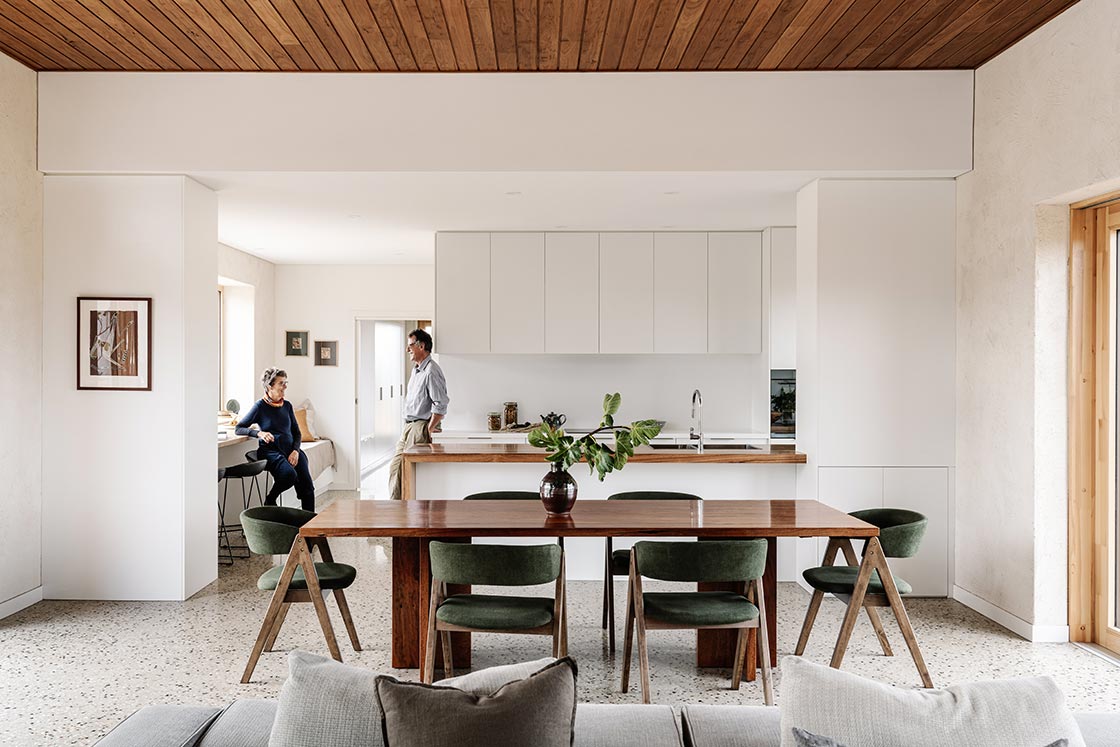
When our clients initially approached us back in 2015, we’d just started learning more about the passive house standard and the importance of understanding building science for keeping a home comfortable and healthy – and energy efficient, which is a consideration for living off-grid.
What started as a conversation about a resilient and sustainable strawbale home in a rural location, soon offered us all a new exciting challenge - was it possible to achieve certified passive house (with a low operational carbon footprint) whilst using materials with low embodied carbon too (with more bio-based materials like straw and timber)?
The whole team was eager to explore this possibility and make it a reality. Thankfully, there’s now a growing awareness about the importance of upfront carbon.
3. Bricks, timber or straw – which is best?
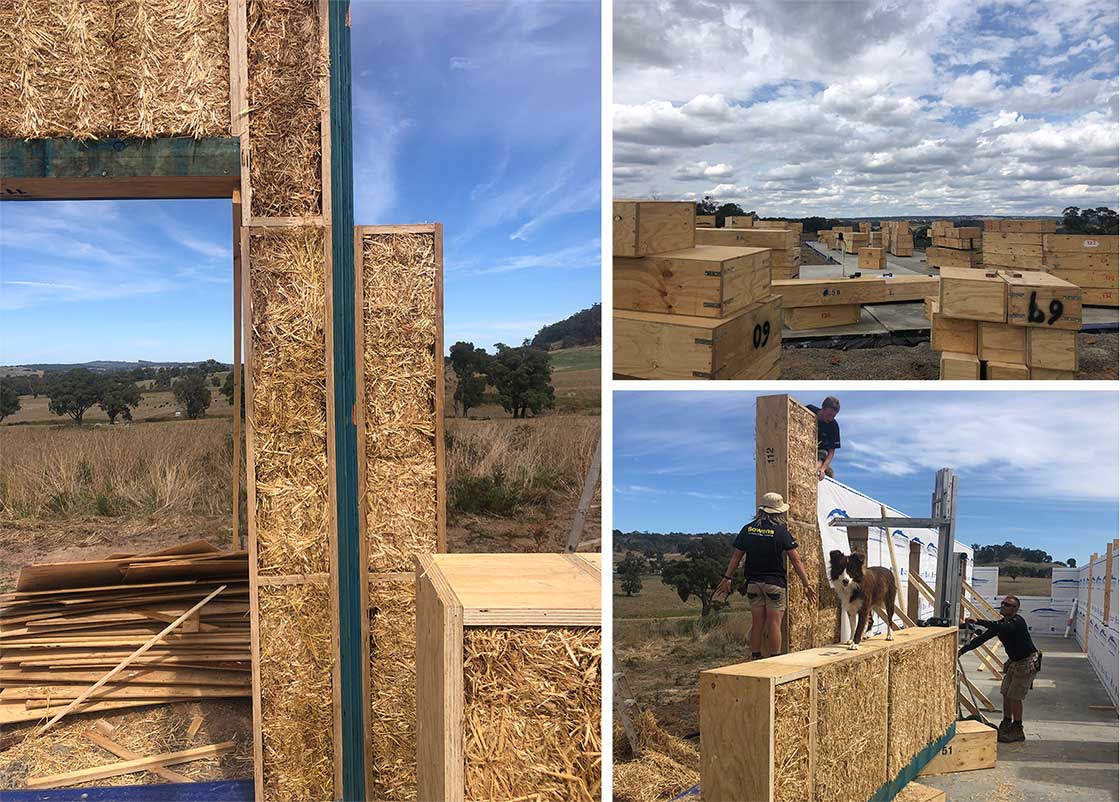
The strawbale walls we used were prefabricated “situp” panels made by John Glassford and team at Huff’n’Puff. No big bad wolf or three little pigs here – this house will be strong and resilient for many years to come. The wall panel frames are crammed full of straw and sealed up for delivery – and it was observed they looked like a stack of coffins.
Being 350 mm – whereas a typical Australian wall frame is 90 mm thick – they are strong. The timber used for the framing is plywood, and this was very fortunate during the Covid materials shortages when typical timber studs were in very short supply.
Straw has excellent insulation values, is a waste-product from the farming industry, and as it’s a natural bio-based material it’s low in embodied carbon. Once erected on site, the panels were temporarily wrapped up again to protect them from weather and from any curious rodents.
4. The wrong orientation?
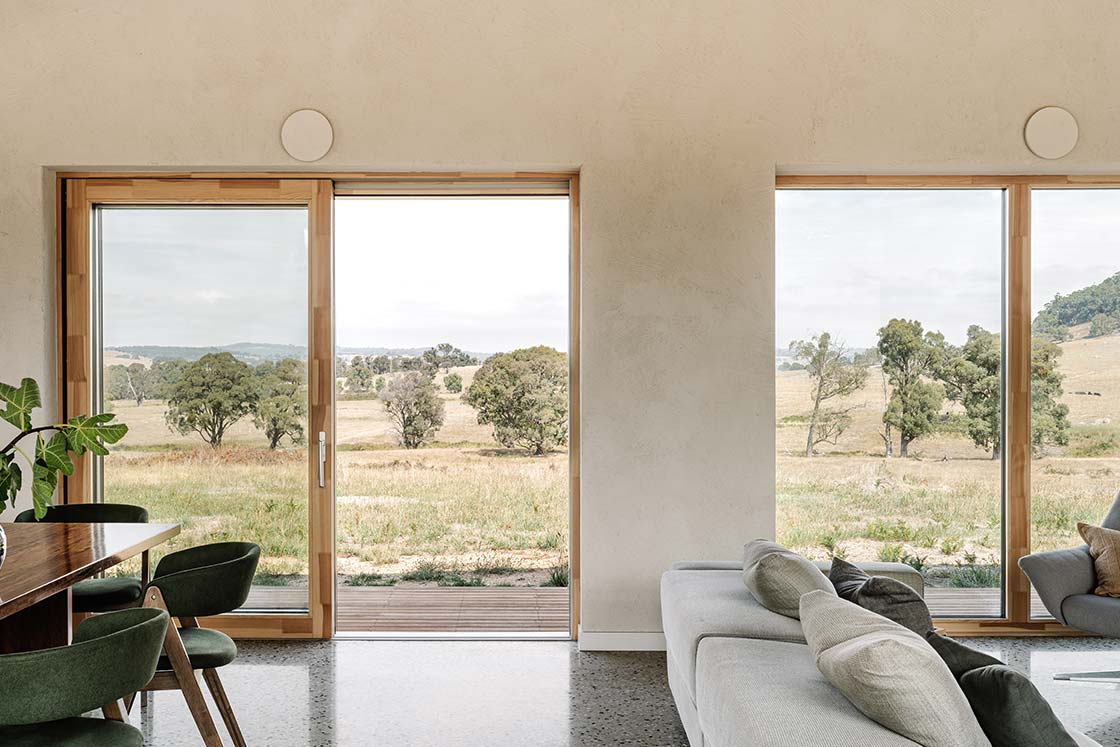
An interesting siting challenge was that this regional location has lovely 360-degree outlooks, however the best views to the distant horizon are to the south.
In the southern hemisphere, we want to maximise solar gain from the north during our winters, while ensuring the building is appropriately shaded from the harsh summer sun.
Traditional principles of “solar passive design” limit south-facing glazing as they lose too much heat from the home in winter.
However, by looking at the building holistically and using PHPP as a design tool, we were able to test the performance impacts of adding (or removing) these southern windows and optimising the design to ensure every room in the house gets to enjoy the views – while not negatively impacting the internal comfort.
From an architectural design perspective, this was exciting news to realise that with passive house there aren’t necessarily “rules of thumb” that apply in every scenario – so our creativity as designers is not limited. In this case our clients desire to embrace those views, meaning we could have large windows to both the north and the south as we’d checked that it would still perform as intended.
5. Biophilic design
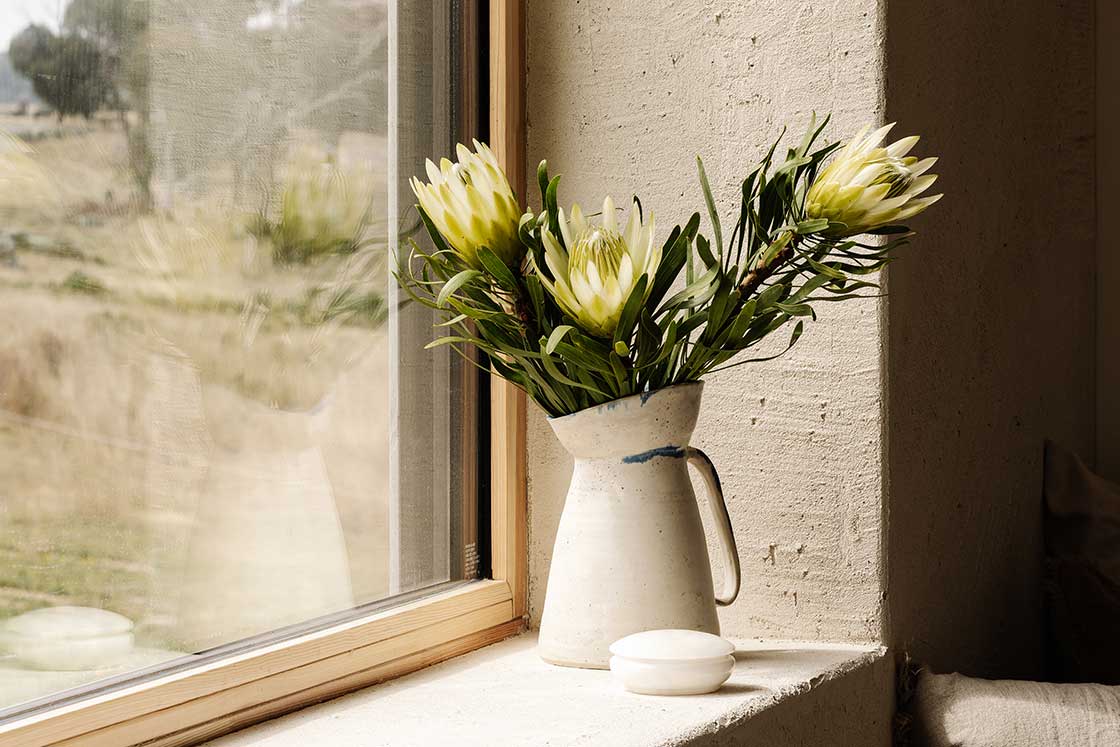
Internally, the straw panels were finished with lime render which formed the internal airtight layer. The exception to this was the two bathrooms, as these were wet areas. They had internal Intello membrane installed so they could be lined with cement sheeting, waterproofing and tiles.
The lime render really contributes to the biophilic design of the home – the texture and natural colour is lovely. Sustainable timbers were also chosen to complement the render, creating a simple, calm colour palette.
Deep sills are another benefit of the lime-rendered straw, framing the triple glazed windows, and creating shelves in some locations – or enough space to sit in the window and enjoy the views in all directions to the countryside.
6. Bushfire-prone area and external materials
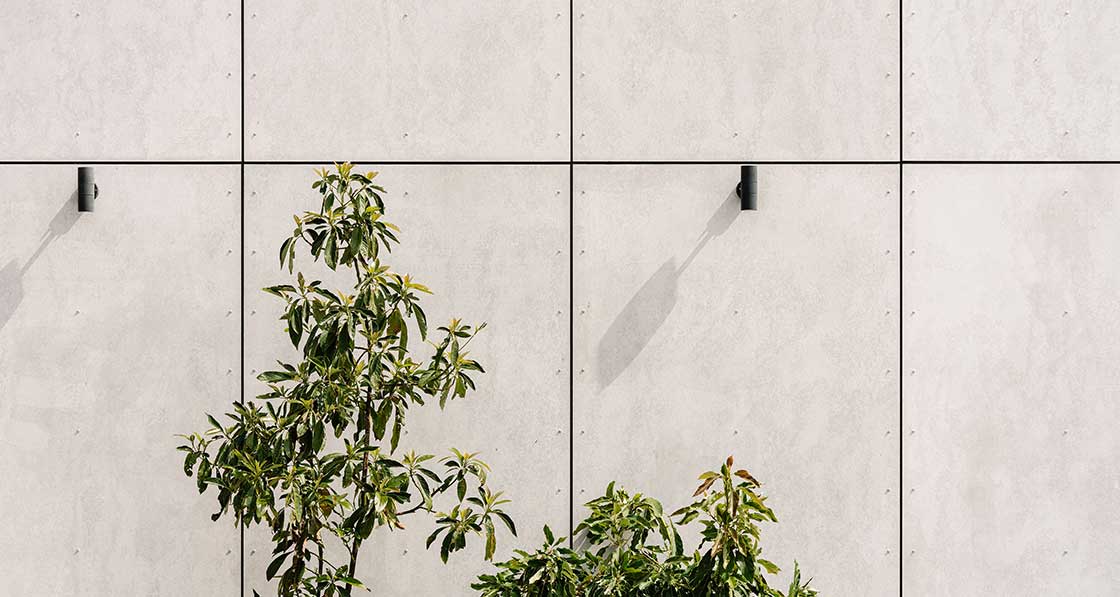
The intention was for this home to be safe, healthy, natural and non-toxic, with low embodied energy, durable and fireresistant materials. Due to the remote rural location, the threat of bushfire is real in hot dry summers, and due to a changing climate.
At the time we were also learning more about the Living Building Challenge and more ethical and responsible material choices – and we wondered if it was possible to have a certified passive house with no plastic. We realised this was potentially possible with rendered strawbale walls but could’ve been trickier to detail for the ceiling airtight layer. We opted for Intello for the underside of the roof trusses, with a suspended ceiling to run the MVHR ducting through.
Our clients wanted to ensure their home was built to a higher ‘bushfire-prone’ standard than the building code required.
While the rendered-strawbale may have been suitable, the roof design would have needed to change with larger eaves if we’d wanted to protect external rendered walls. As this wasn’t aligning with the design concept of a long house reminiscent of an old woodshed in the paddock, and the additional bushfire protection we were aiming for externally, we tried to source non-combustible magnesium oxide boards for cladding. However, thanks to the pandemic and supply issues, this unfortunately wasn’t to be, and we had to choose a non-combustible cement-sheet cladding instead.
Its neutral colour with clean lines does look lovely. This meant the external face of the strawbale was wrapped with a vapour- permeable membrane, with a ventilated cavity behind the cladding in a way more like typical lightweight walls would be constructed.
7. Views for days
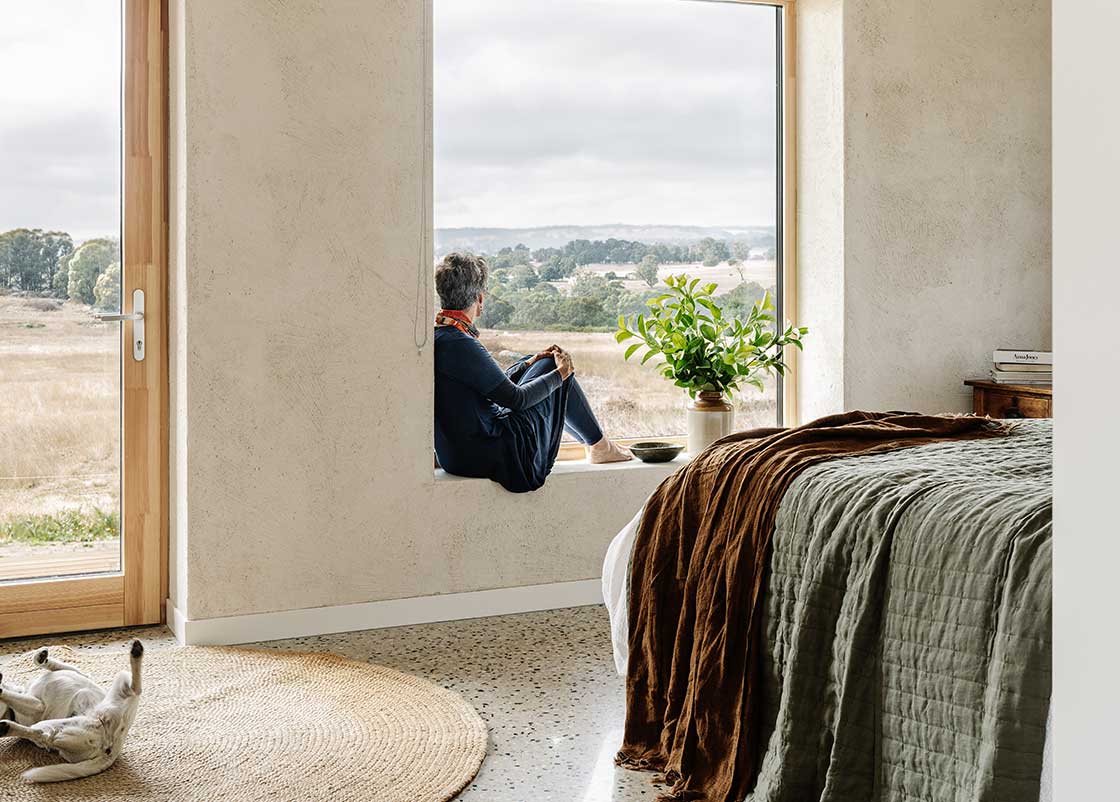
This home sits quietly in its place. It’s modest in size, selfsufficient in use, and a healthy home to live in harmony with the landscape.
While it is relatively small (TFA 171 m2) in comparison to typical new Australian homes (240 m2), inside it feels incredibly spacious and with connection to the distant horizon in every direction, and bright with lots of natural daylight. It is a real retreat from the harsh elements all year round. Our clients have shared how they love watching the sky change colours, and how this paints the landscape in varying beautiful ways – depending on the time of the day, the time of year, where they are in the house and the direction they’re facing.
This was a conscious design decision: to create space for contemplation and enjoy the views, to be able to chase the sun when desired, or to be able to seek shade and shelter from the winds when required too.
8. That’s something a bit different. Who will build a straw passive house in a rural location?
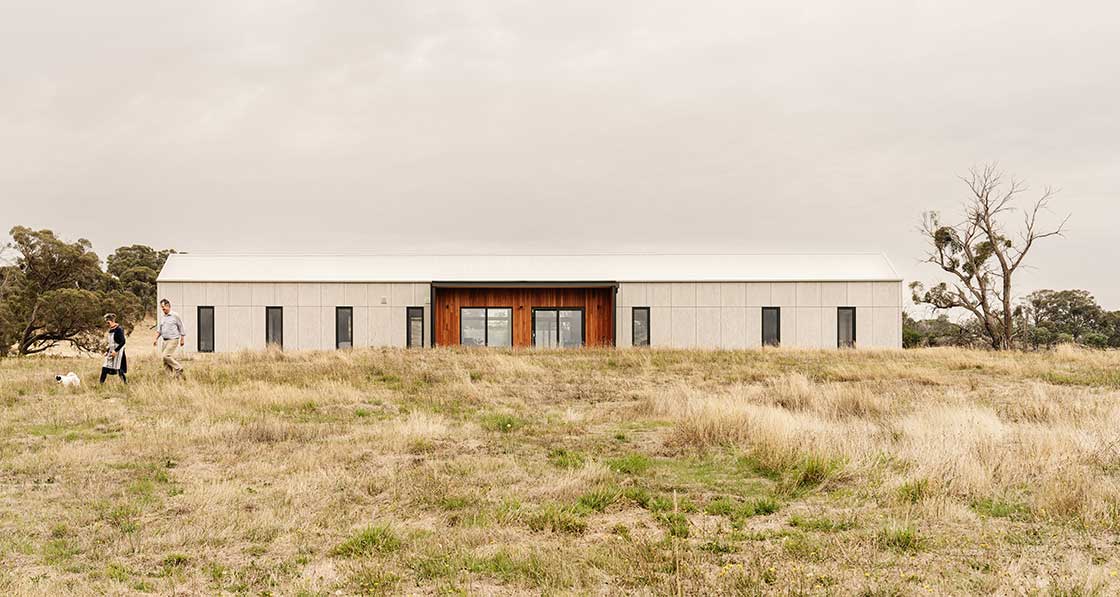
The site is reasonably remote, with not a lot of local builders servicing the area – particularly not ones who were familiar with straw bale construction or passive house performance.
This led us to working with Huff’n’Puff straw “Sit-up” panels (a prefabricated strawbale company) who could make the wall panels off-site and deliver them all boxed up ready to be erected.
Then with the expertise of a great team of builders, Hedger Constructions, who care about quality and were very open to learning something new, we had a successful outcome.
9. Flexibility and adaptability
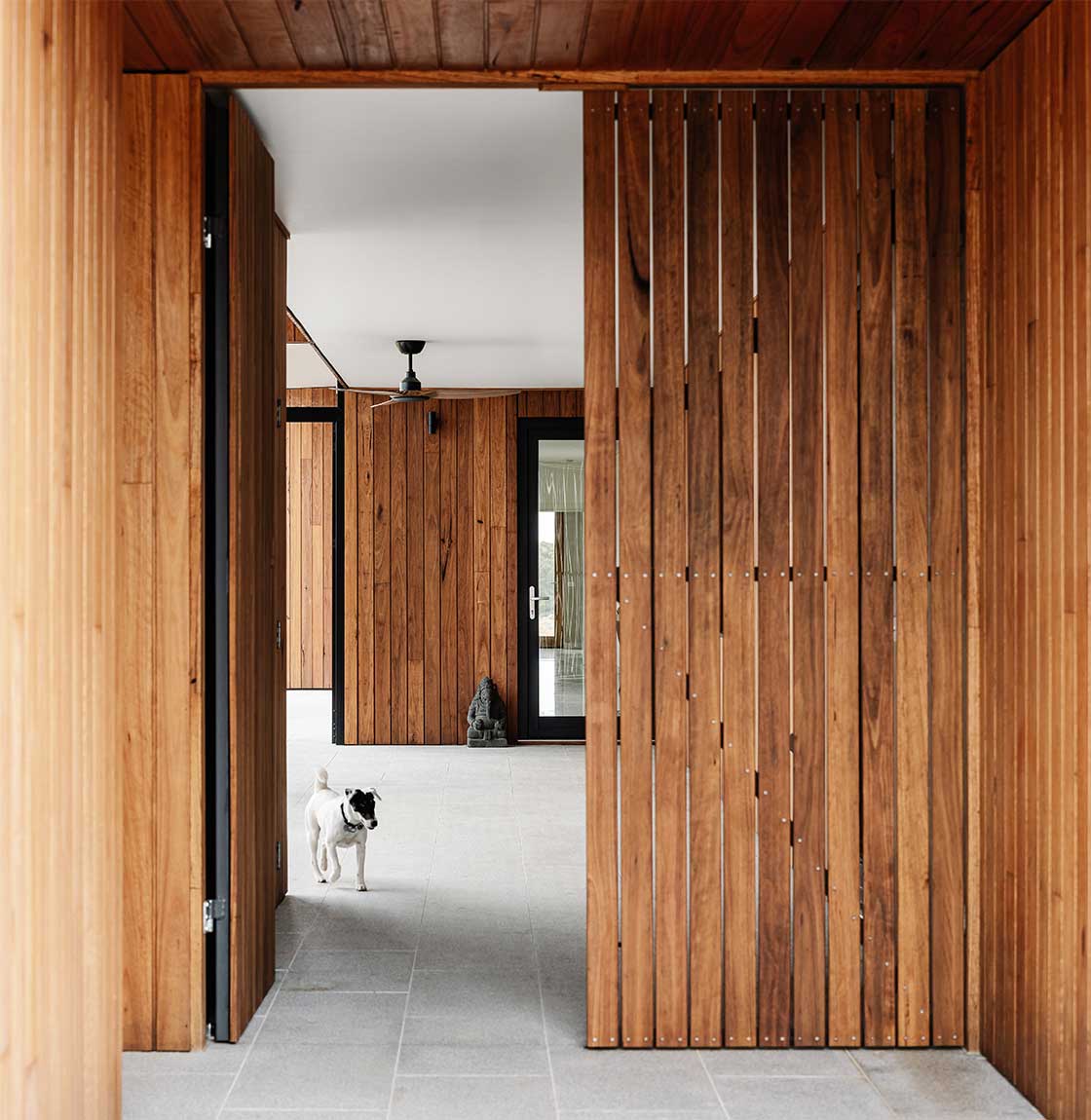
The house design balances the integration of passive solar design principles with the site constraints and local climatic conditions – view, orientation, site slope, sun, wind and rain. It has also been designed with a zoning of spaces unlike a typical family home, creating a flexibility of use with one wing of the house occupied by its permanent residents while the second wing can adapt to fulfil the needs of visiting family and friends when required. The ‘guest’ wing is within the same thermal envelope but separated by an external timber-lined covered entry/hallway space.
This creates a sheltered transition between outside and inside, whilst also creating privacy between the homeowners and their guests. Our clients have shared how well this is working for them and their visitors – making the home feel a lot larger than it is by utilising these outdoor spaces as extra rooms.
10. Thermal envelope and airtightness
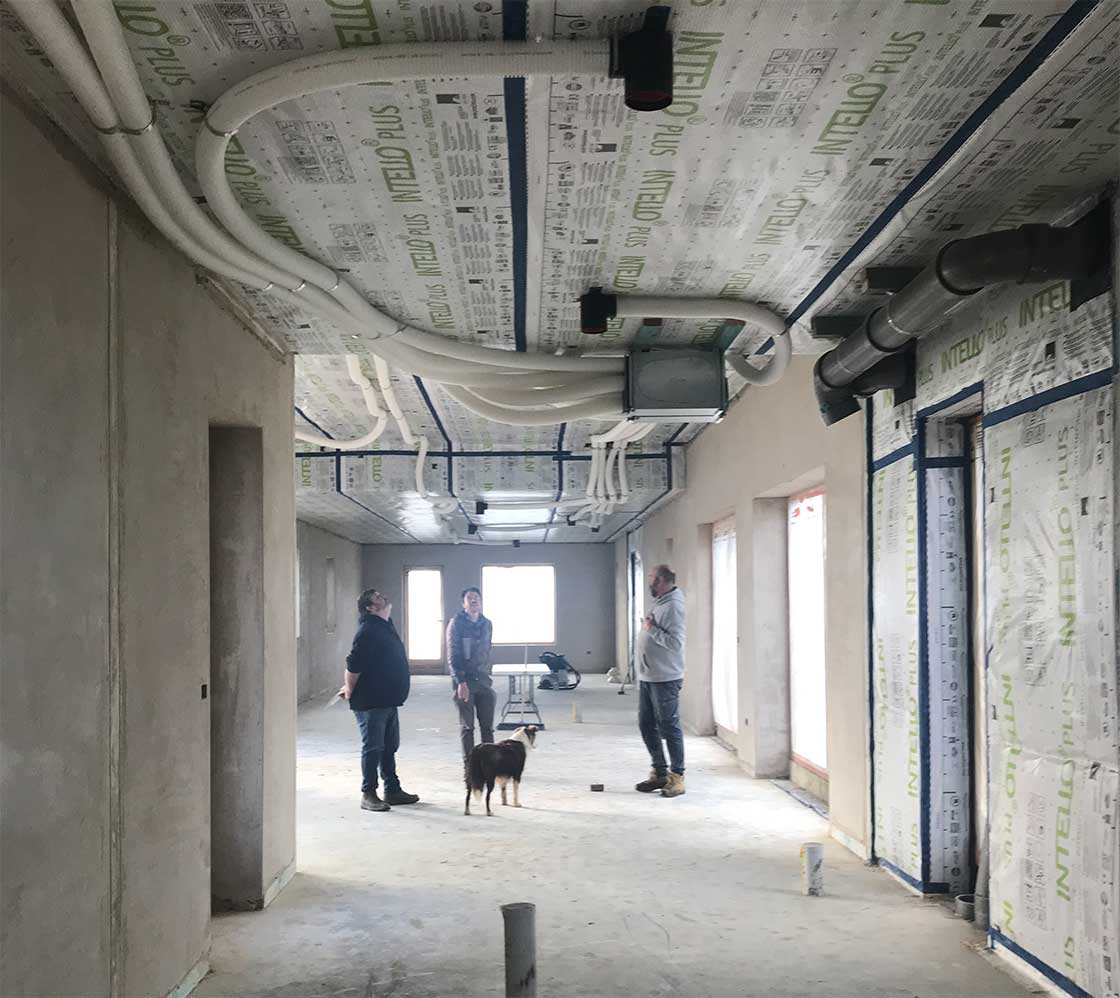
The floor plan for this house is relatively long and thin (37 m long by 6.7 m wide), with the roof trusses spanning the full width in the north-south direction. This meant the house could be constructed with the floor, external walls and roof structure all up, insulated and airtight before any internal walls were built. This simplified things for the builders internally with installing the MVHR and dealing with other services.
You don’t often see a whole house’s thermal envelope volume in one space like this, without the visible interference of internal partitions. It did create a distorted sense of size during the construction process but was clever to construct it in this way.
11. Why the odd roof pitch?
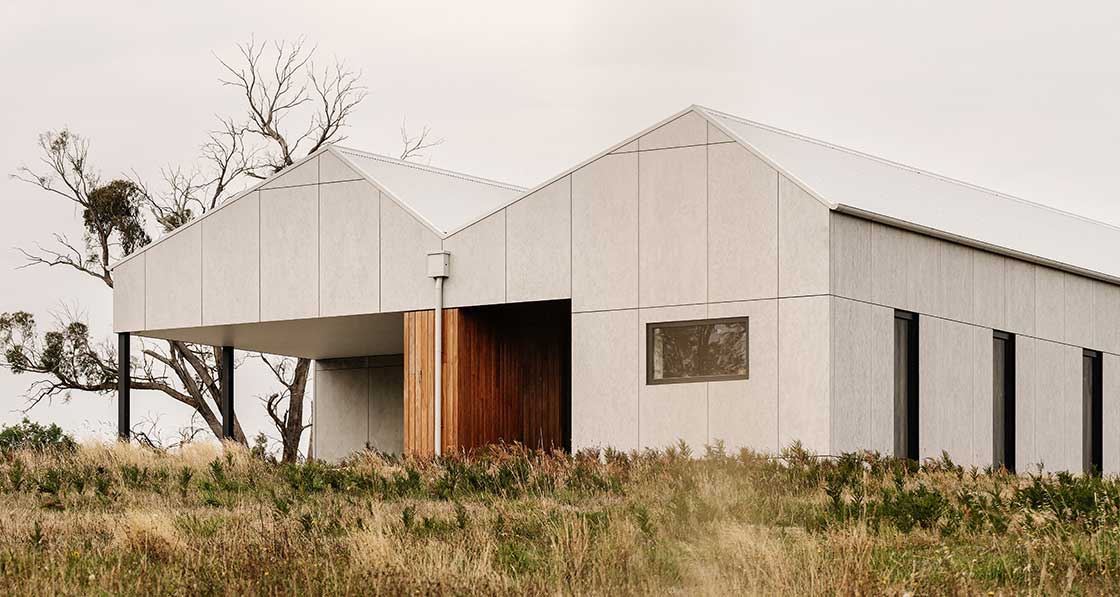
This home is off-grid, which means it’s completely self-sufficient for power, water and disposing of waste on site. There is no gas connection (or bottled LPG gas), so it is an all-electric home with enough solar PV and batteries to run the home and charge electric vehicles too.
The roof of the house was designed with an asymmetrical gable, so the north-facing pitch was steeper – a more appropriate angle to harvest that renewable energy from the sun, maximising the solar collection. The carport is at the western end of the house, which creates an asymmetrical double gable profile and adds a little fun and a modern twist to the roof line.
12. Beauty is in the eye of the beholder
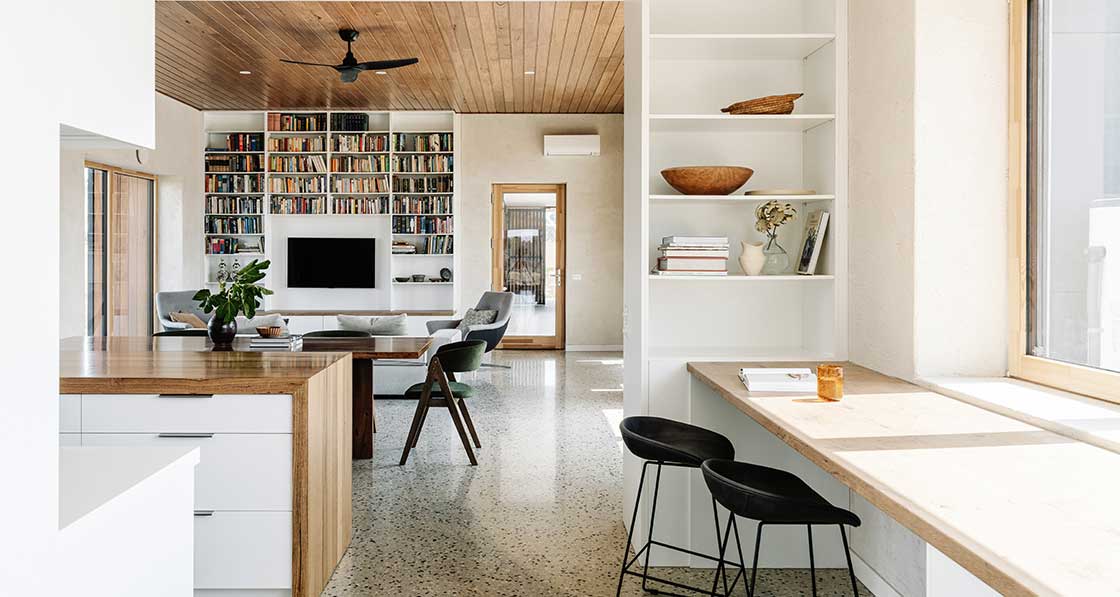
One of the design intentions was to keep the house size more modest, but create great functional use of all the space, while maximising the views, and creating a warm and welcoming space to be in.
There are appropriately sized eaves to the north to shade the house from the harsh summer sun while ensuring the occupants can enjoy natural daylight and views to the landscape all year round.
Our clients’ neighbours commented on this as they live in a typical ‘wooden tent’ with little insulation, single glazing, and no external shading. In an attempt to keep cool in summer they close all the curtains and keep the house dark. It was a stark contrast for them to visit a home that was perfectly comfortable inside despite the sweltering heat – and still light and bright and a joy to be in!
Our clients also told us how their home was the ‘talk of the town’ while under construction, as everyone was curious about this “big, long shed with small windows”. Yet when the neighbours visited, they all commented on how deceptive appearances could be from afar, and how truly beautiful this home feels to be in. (We know that a passive house’s beauty is more than skin-deep.)
The last word should go to our clients: “We are delighted to be in the house,” they said. “It really is wonderful. Thank you for your skill and thoughtfulness in designing our lovely home.”
Selected project details
Architect and interior designer: Envirotecture
Builder: Hedger Constructions
Prefabricated SIP supplier: Huff-n-Puff Strawbale Constructions
Passive house consultant: Alex Slater
Passive house certifier: Detail Green
Stylist: Belle Bright
Windows: Logikhaus
Ventilation: Fantech
Cladding: Cemintel Barestone
Airtight membranes: Pro Clima




